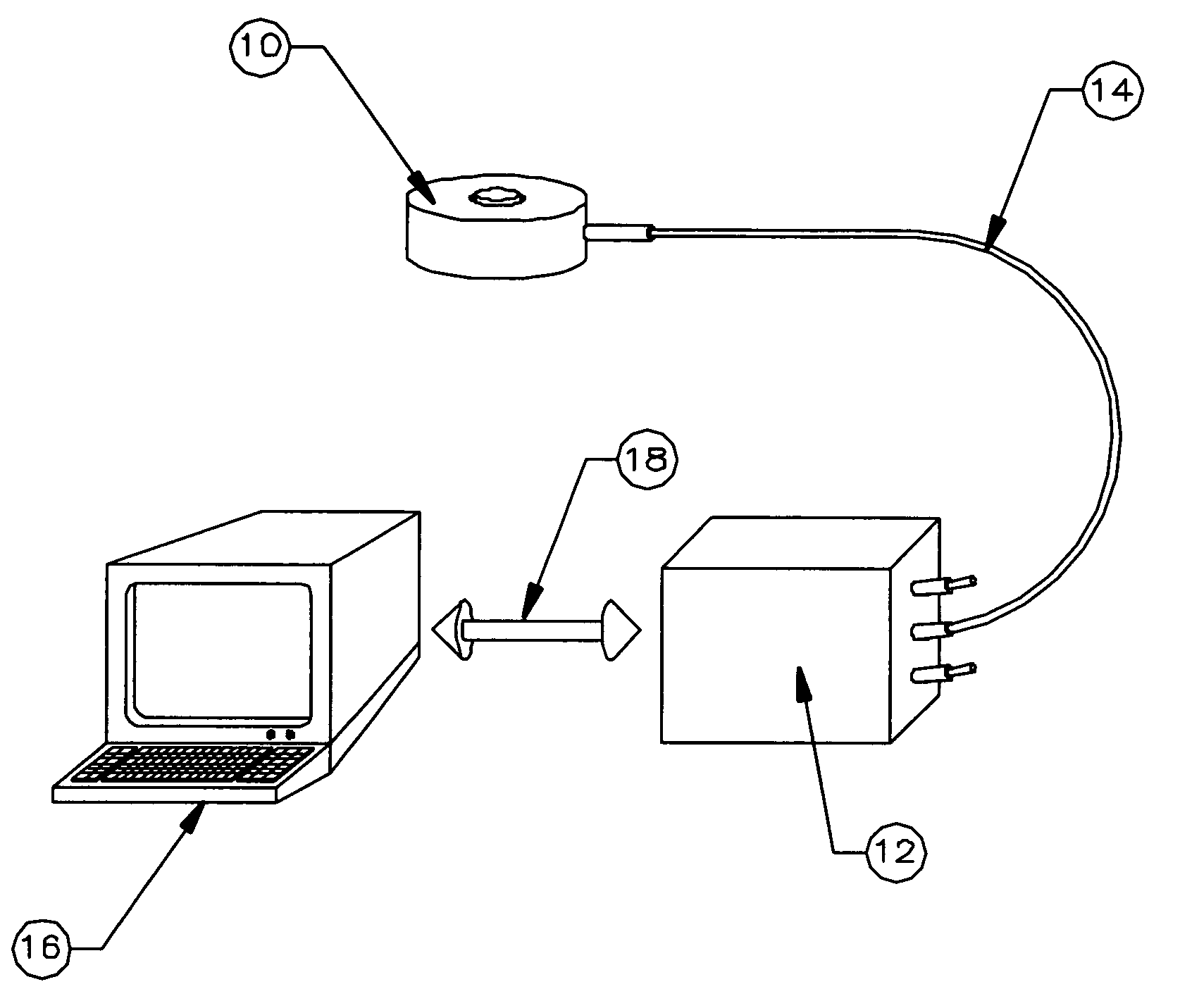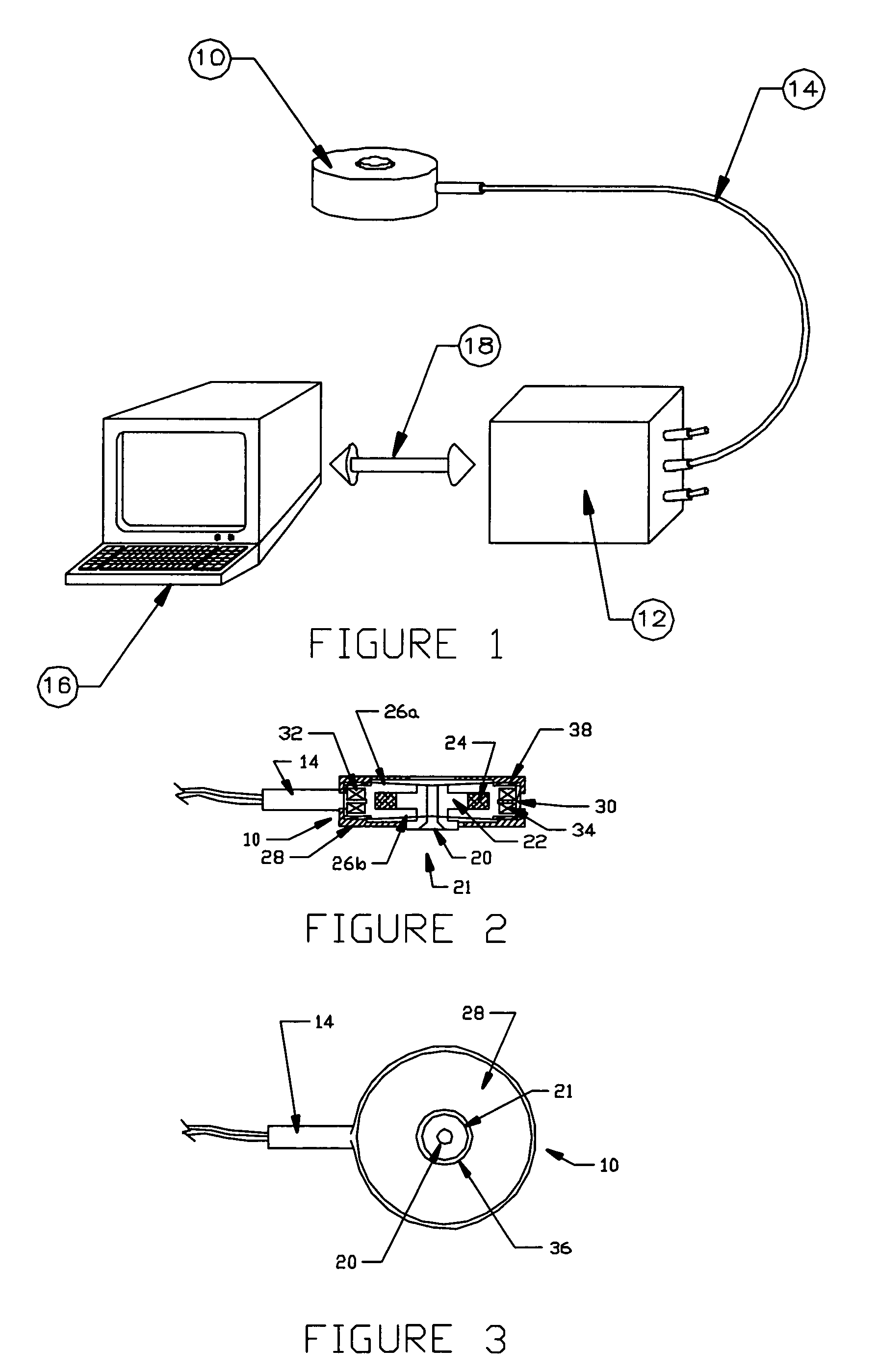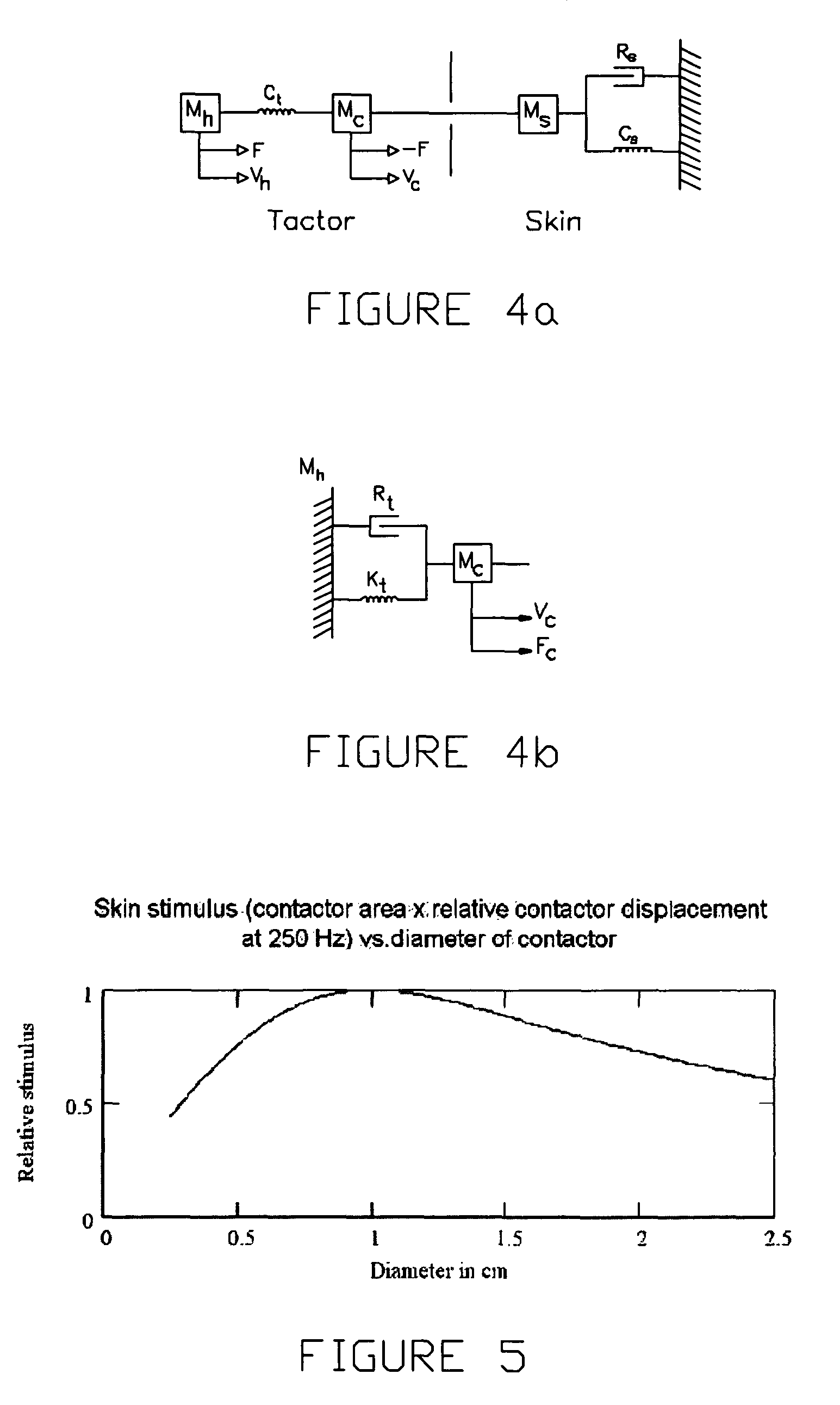Method and apparatus for generating a vibrational stimulus
a vibration stimulus and vibration technology, applied in the field of vibration stimuli, can solve the problems of difficult to be perceived by a user, difficult to discern the exact location of the stimulus on the body, and low vibration output, and achieve the effect of convenient placement against the body
- Summary
- Abstract
- Description
- Claims
- Application Information
AI Technical Summary
Benefits of technology
Problems solved by technology
Method used
Image
Examples
Embodiment Construction
[0045]Referring to FIGS. 1 through 13, wherein like reference numerals refer to like components in the various views, there is illustrated therein a new and improved vibrotactile transducer apparatus, generally denominated 10 herein.
[0046]FIG. 1 illustrates a first preferred embodiment of the vibrotactile transducer of this invention. A lightweight, physically compact and electrically efficient tactile transducer is herein described that could elicit a localized sensation on the skin. FIG. 1 is an isometric view of a vibrotactile transducer 10 with its associated controller and driver electronics. One or more transducer(s) 10 are connected to controller / driver electronics 12 by connecting cable 14. A computer or other controller 16, for example a portable digital assistant (PDA) may communicate with controller / driver 12 via either a digital bus, analog control lines or wireless interface 18. The driver / external power source may contain a signal synthesizer and linear or switching po...
PUM
 Login to View More
Login to View More Abstract
Description
Claims
Application Information
 Login to View More
Login to View More - R&D
- Intellectual Property
- Life Sciences
- Materials
- Tech Scout
- Unparalleled Data Quality
- Higher Quality Content
- 60% Fewer Hallucinations
Browse by: Latest US Patents, China's latest patents, Technical Efficacy Thesaurus, Application Domain, Technology Topic, Popular Technical Reports.
© 2025 PatSnap. All rights reserved.Legal|Privacy policy|Modern Slavery Act Transparency Statement|Sitemap|About US| Contact US: help@patsnap.com



